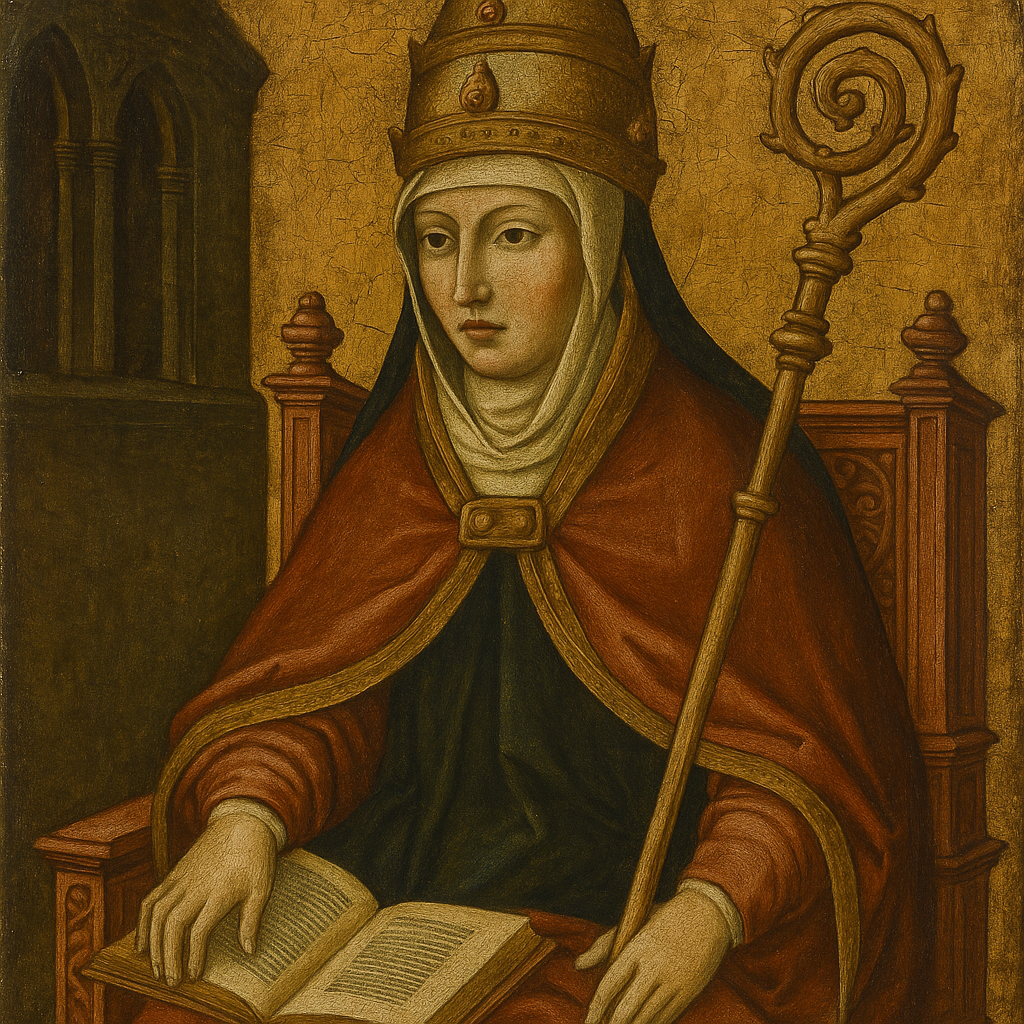The legend of Pope Joan has spanned centuries as a captivating and unsettling tale. A woman on the throne of Saint Peter, disguised as a man and destined for a tragic downfall: is it popular myth or an inconvenient truth? Let’s delve into the origins of this enigmatic figure that has inspired stories, satire, and even the Tarot, and reflect on what might lie beneath its shadowy layers.
The Origins of the Legend
The figure of Pope Joan first emerged in the 13th century, a time rich in chronicled tales and legends. Early mentions appeared in the works of Jean de Mailly and Stephen of Bourbon, but it was Martin of Opava, author of the Chronicon Pontificum et Imperatorum, who gave the legend its most enduring and detailed form.
The story tells of a woman of remarkable intellect and determination who, disguised as a man, rose through the Church hierarchy under the name John VIII. Her true identity was supposedly revealed during a solemn procession when she unexpectedly gave birth, shocking the faithful. Different versions tell that she was either stoned to death by the crowd or imprisoned, her name erased from official records.
A Historical Analysis
Modern historical research is nearly unanimous in regarding Pope Joan as a legendary figure without concrete evidence. There are no contemporary documents that confirm the existence of a female pope, and the papal succession—between Pope Leo IV (who died in 855) and Pope Benedict III—leaves no gap that could accommodate an unknown pontificate.
It’s likely that the legend of Pope Joan arose as a veiled criticism of the Church’s contradictions or as a symbolic response to medieval anxieties about the role of women in religion and society.
The Mystery of the “Sedia Stercoraria”
One of the most intriguing elements linked to the legend is the so-called “sedia stercoraria”, a ceremonial throne with a hole in the seat. According to some popular versions, this chair was used to physically verify the sex of a newly elected pope, to prevent another “Pope Joan” incident. However, archaeological studies have shown that such chairs were originally Roman birthing seats or latrines, later reinterpreted through a legendary lens.
Pope Joan in the Tarot
The legend of Pope Joan also left its mark on the esoteric imagination, particularly in the Tarot. The second card of the Major Arcana, called “The Papess” (or “The High Priestess” in modern decks), symbolizes hidden knowledge, intuition, and mysterious wisdom. Some link the card directly to Pope Joan, while others interpret it as a symbol of the sacred feminine, embodied by archetypal figures like Isis or the Virgin Mary.
A Legend, a Persistent Doubt
Based on verified historical events and documented dates, we can only confirm that the legend of Pope Joan most likely originated from the fears and tensions of the time concerning women’s roles and ecclesiastical authority. Yet, legends have a peculiar quality: they always leave room for doubt, a lingering thought that keeps the mystery alive.
Legends are the fading of history, its dissolution over time. They become uncertain fragments, lacking documents and detailed descriptions, yet they endure like distant echoes of something that perhaps once held a grain of truth.
Although historiography strongly supports the idea that this is mere medieval invention, we can still imagine an alternative scenario: one where history itself was altered by those who controlled power and knowledge. After all, history is not only what happened but also what was recorded and passed down—and those in power have often shaped and even erased inconvenient facts.
This would not be the first instance. Consider the Damnatio Memoriae of Ancient Rome, where entire public figures such as Geta were systematically erased from official memory; or the case of Hypatia of Alexandria, the philosopher and scientist whose life and contributions were obscured by the ecclesiastical establishment because of her prominent intellectual role in a male-dominated world. Another example is the mysterious fate of the Princes in the Tower, Edward V and Richard of Shrewsbury, whose disappearance was politically manipulated during England’s turbulent 15th century.
These examples remind us that historical memory is fragile and often subject to the will of those in power. Thus, even in the absence of hard evidence, that spark of doubt remains: perhaps not a woman pope, but some deeper, inconvenient truth might have ignited the legend of Pope Joan.
Whether real or imagined, Pope Joan remains one of the most fascinating legends of the medieval world. Her story has traversed the centuries, leaving traces in art, culture, and collective imagination. The true strength of her tale lies precisely in its liminal space between history and legend, where uncertainty feeds the mystery—and perhaps, hidden within, there lingers a fragment of truth that official history has chosen to forget.








Leave a Comment